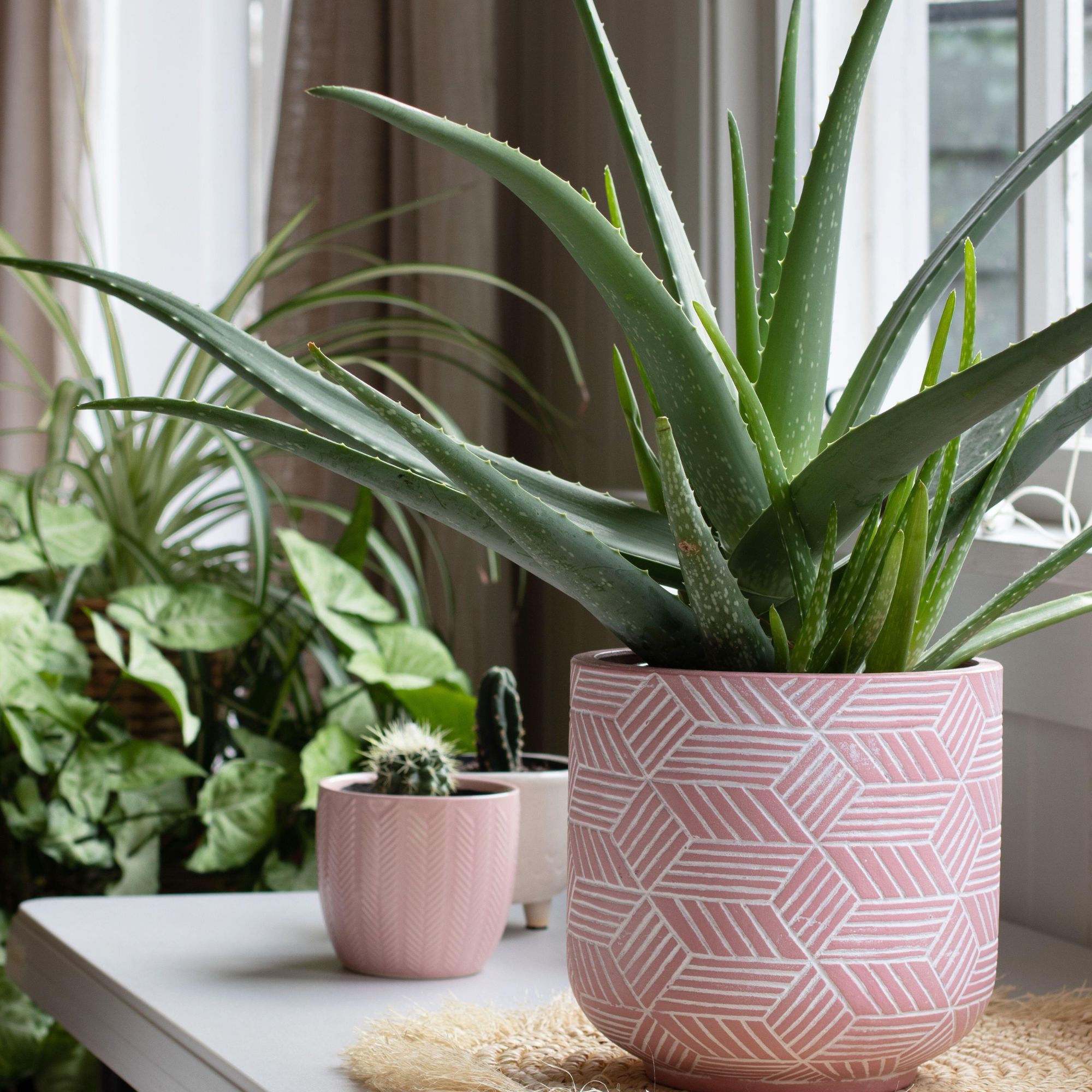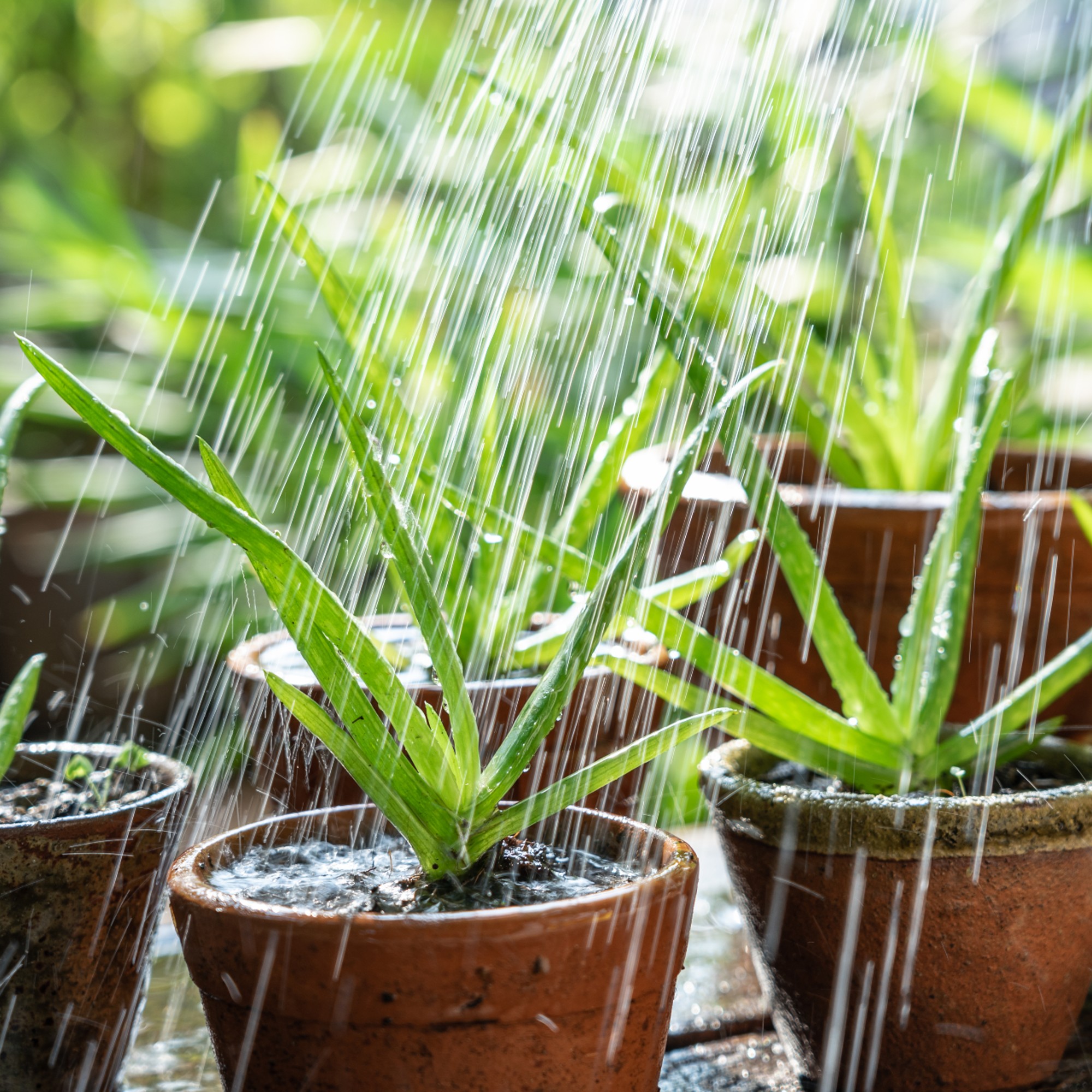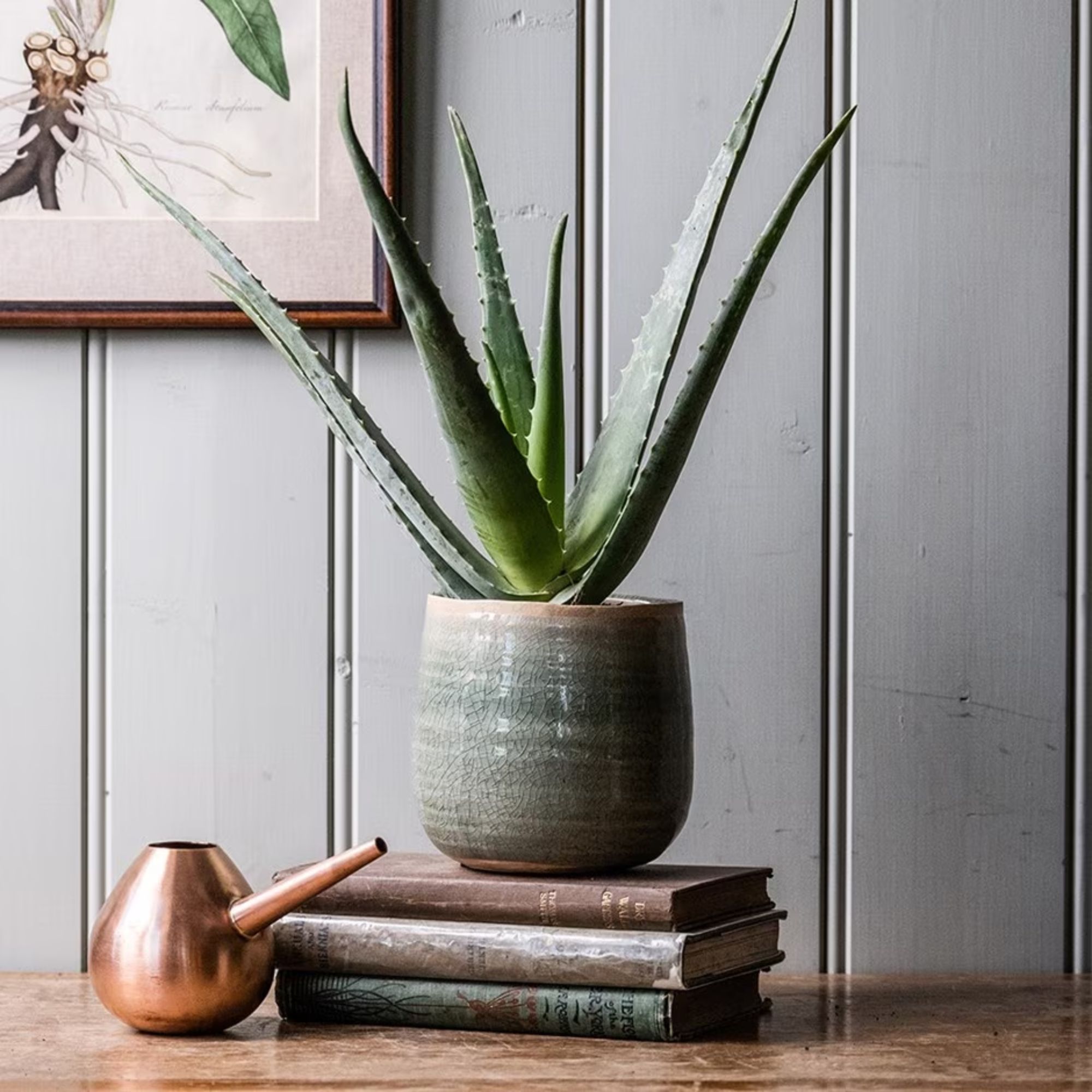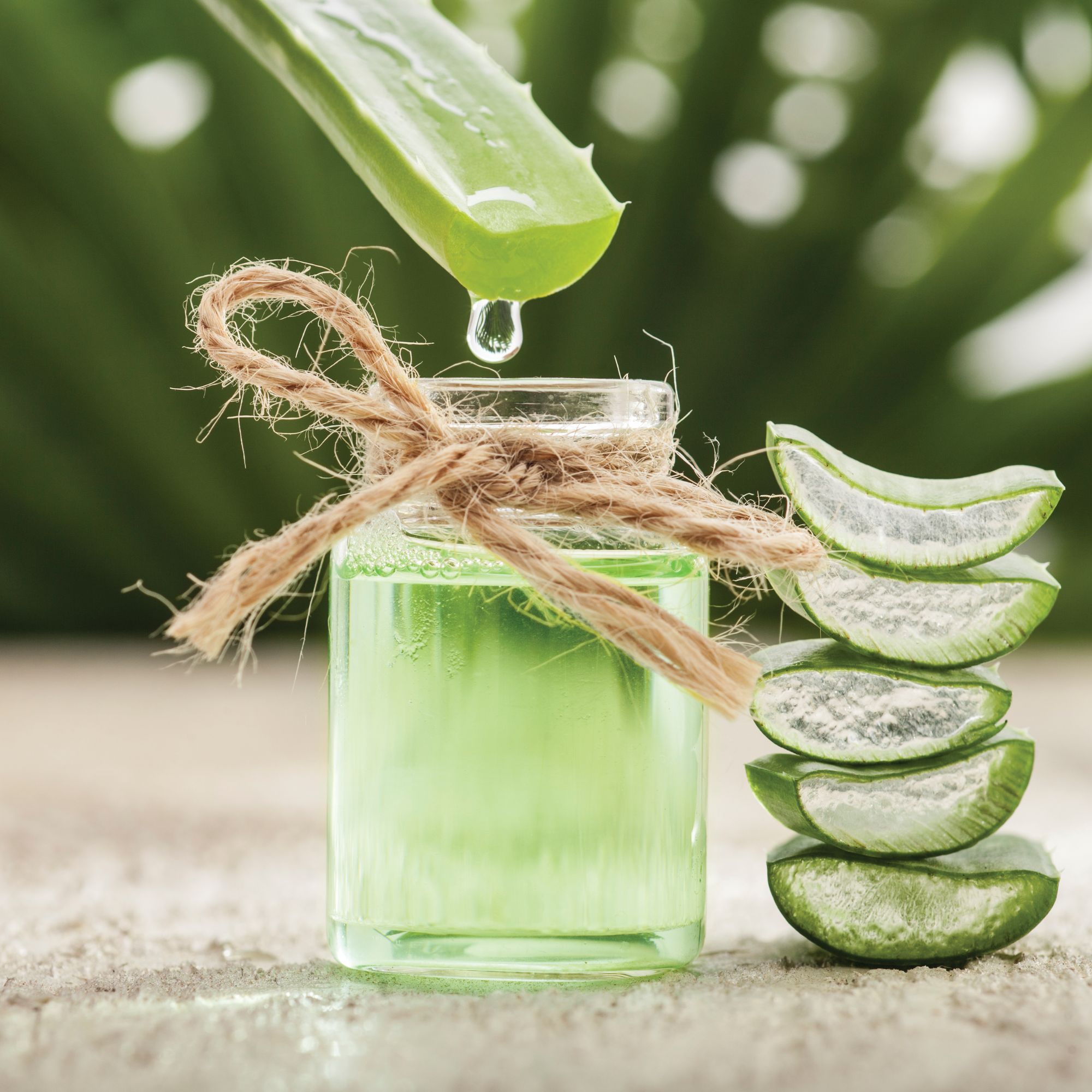
Learn how to care for aloe vera and you'll be rewarded with both a statement houseplant and a continuous supply of its healing gel.
A must-have addition to any houseplant ideas, aloe vera is praised for its low maintenance, making it perfect for novices or gifting to loved ones – after all no home is complete without a houseplant or ten – and their medicinal properties.
‘Aloe vera gel is widely known to relieve sunburn, help heal wounds and is great as part of a skincare routine to keep your skin hydrated,’ explains Emily Lawlor, owner of Happy Houseplants. In fact, according to experts at Kew, even Cleopatra used aloe vera as part of her beauty regime over 2,000 years ago.
How to care for aloe vera
One of the most popular houseplants, aloe is celebrated for the soothing gel contained within its leaves, plus it's super easy to care for.
Once you've figured out how to care for aloe vera, can learn how to propagate aloe vera and increase your collection of this beautiful houseplant.
Where to buy aloe vera
Gardeners Dream Aloe Vera
This attractive evergreen tropical plant is approximately 20 to 30cm (including the pot).
Franky Aloe Vera
This 35-40cm potted plant can be paired with one of 13 decorative pots – ideal for gifting.
Aloe Vera
Beautiful aloe vera plant, perfect for beginners. Available with a range of decorative pots or in a nursery pot.
Where should an aloe vera plant be kept?
Naturally thriving in arid rocky desert climes, aloes benefit from warmth and sunlight. ‘Opt for a brightly lit spot with indirect sunlight, like a south-facing windowsill that gets dappled light throughout the day,’ explains Tom Cook, houseplant buyer at British Garden Centres. ‘This will give your aloe vera the energy it craves for growth without risking sunburn on its leaves.’
Aloe vera is one of the best air-purifying indoor plants, plus it also absorbs moisture and reduces humidity. This makes it ideal for use in a bedroom, where it will improve the air quality while you sleep, or used to reduce moisture as part of kitchen plant ideas.

How often should aloe vera be watered?
Aloe vera conserve water in their leaves, so only require watering from time to time. ‘When watering, provide enough water to induce runoff from drainage holes, ensuring all roots receive moisture. Always let the soil dry out before watering again,’ explains Tom Cook, houseplant buyer at British Garden Centres.
Always test the soil before watering – this will help you avoid the most common succulent care mistakes. You can test the soil by inserting a finger into the soil or using a moisture meter. The leaves can also serve as a useful guide – plump leaves indicate the plant is hydrated while softer ones suggest it’s time to water.
If your aloe looks dry and dead, then this expert tip will help you tell if your houseplant is beyond reviving – in most cases the aloe just needs a drink.
Overwatering is more common than underwatering. ‘Aloe vera are sometimes called the ‘plant of immortality’ due to their ability to survive long periods of drought by closing their pores to prevent water loss,’ says Richard Cale, founder of Leaf Culture. However, too much water can quickly lead to root rot.
An aloe vera probably won’t need watering over winter but this depends on your home, as central heating can have a drying effect – water if needed.

Do aloe vera plants need feeding?
Yes, aloe vera plants need feeding.
Just as when caring for Burro's Tail, feed your aloe vera with a standard succulent plant food, like this succulent and cactus houseplant feed available on Amazon.
‘Use a diluted solution of a balanced liquid houseplant feed specifically formulated for cacti and succulents. These tend to be lower in nitrogen and higher in phosphorus, which is beneficial for aloe vera,’ advises Tom Cook, houseplant buyer at British Garden Centres. ‘Feeding once a month during the active growing season (spring and summer) is enough.’

How to repot aloe vera
‘To repot, remove the aloe from its old pot. Check the root health and remove any dead ones. Place it in the new pot at the same soil level and fill the remaining space with a well-draining cactus mix. Water after a week,’ advises Tom Cook, houseplant buyer at British Garden Centres.
How do you harvest and store fresh aloe vera?
Aloe vera is one of the best houseplants to boost wellbeing – both as a plant and as a gel. If you are growing an aloe vera for its medicinal qualities, then it's important to harvest its leaves in a way that won’t damage the plant. ‘You want the plant to be at least the size of your fist before harvesting its leaves, and then only take the biggest, oldest leaves from the outside of the plant,’ says RHS’s chief horticulturist Guy Barter. ‘If the plant is small, only take one leaf.’

Once you’ve harvested the leaves, you need to prepare them for use. ‘Allow the freshly cut leaf to sit upright in a cup for about 15 minutes to let the yellow latex drain out. This latex can cause skin irritation, so it’s important to remove it,’ says Sonia Kainth from House of Kojo. ‘Once drained, rinse the leaf thoroughly. To extract the gel, use a knife to remove the serrated edges and slice the leaf lengthwise. Scoop out the clear, inner gel with a sterilised spoon and place it in a clean container – it will keep in the fridge for about a week. For a smoother consistency, blend the gel.’
While aloe vera is safe to use topically, RHS Botanists advise against consuming homegrown aloe vera.
FAQs
Should you mist aloe vera?
No, you should not mist an aloe vera – they don't need high humidity levels to prosper and over-misting, like over-watering, can cause rot.
As a general rule, succulent plants don't like misting as it can cause the crowns of the plants to rot or fungus to grow
When should you repot an aloe plant?
Signs that your aloe needs repotting include:
- Roots growing out of the drainage holes
- Growth has slowed
- The plant is top-heavy/wobbly
- Leaves look pale
- Water runs quickly through the pot
- Soil dries out very quickly
Treat your Aloe Vera plant well and she'll reward you with striking leaves and an endless supply of soothing gel.







